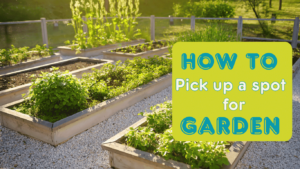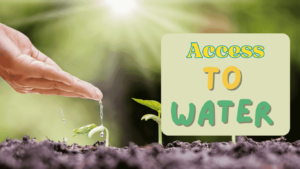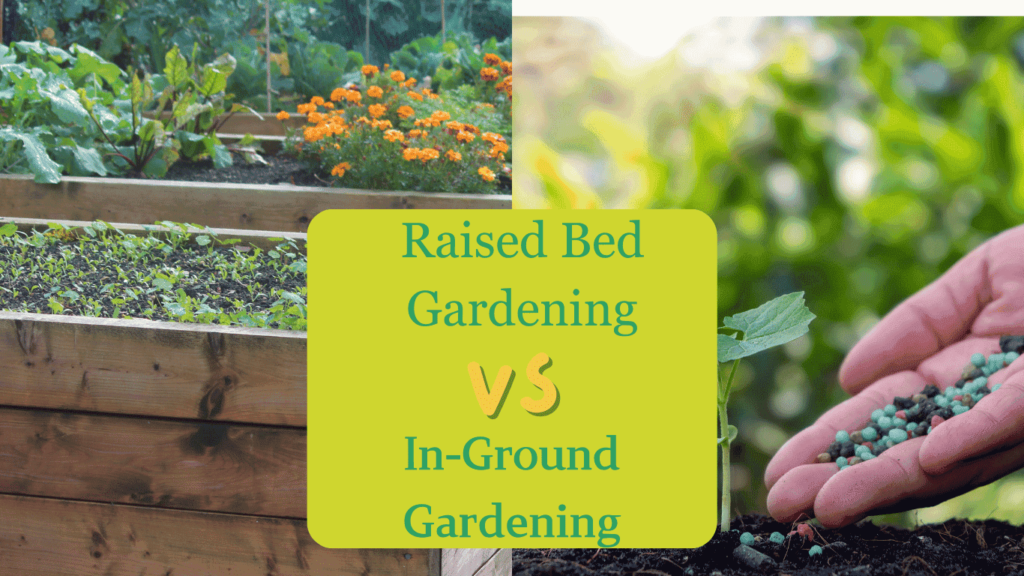Choosing the best location for your garden plays a big role in how well your plants will thrive. When you pick a spot for a garden, you’ll want to look for factors like sunlight exposure, soil quality, drainage, and accessibility.
On average, you’re looking for an area that gets nearly 6-8 hours of direct sunlight per day, besides this it needs to have well-draining soil if you’re considering in-ground gardening.
Most importantly there needs to be a water source. Plus you can avoid areas with heavy foot traffic or under the shade of large trees.
Spending time while choosing the best spot will set you up for a flourishing, productive growing season.
How to Choose the Best Location for Your Garden

Here are some traditional and proven techniques that will help you pick a spot for your garden:
Assess Sunlight Conditions
Sunlight is the most important thing for plant to thrive, no matter whether indoor plants, or outdoors plants, some need direct and some need indirect sunlight.
Also Read: How to Start a Vegetable Garden: A Beginner’s Guide
Determine the amount of sunlight the area receives
The first thing is to evaluate how much sunlight the garden area receives throughout the day. It’s important, although different plants have very specific light requirements.
After observing the area at various times, from early morning to late afternoon, you get a sense of the sun exposure.
Evaluate Soil Quality
Check the soil before making a decision to plant a garden. It is essential to test the soil’s condition. This can provide crucial information like the content of nutrients as well as pH levels and overall health for growing healthy plants.
You can also conduct a quick DIY soil test at home or visit the local cooperative extension office for an expert soil analysis.
There needs to be an easy Access to Water

Easy access to water is another important factor when you’re choosing an ideal location for your garden.
Here’s why to choose:
Proximity to Water Source
The distance between your garden and irrigation system or any other source of water can affect the ease of your garden.
This is why you should pick a spot that is close to a water connection or faucet, which will make your regular irrigation much easier in particular when you have bigger gardens.
Carrying large watering cans and hoses for long distances could become tiring and tiring.
Plant Water Requirements
Each plant has its own requirements for water, and some are drought-tolerant, whereas others require soil that is consistently moist especially vegetables .
So you can Analyze the requirements for water for the plants you want to plant.
For instance, thirsty vegetables like peppers, tomatoes, and leafy greens perform best in a region that has easy access to plenty of water. On the other hand, succulents, as well as Mediterranean herbs could prosper in a more dry location.
Water Efficiency Strategies
Besides, having a nearby water source, you’ll also need to think about the most efficient methods of watering your garden.
There are many options to consider, such as drip irrigation systems and soaker hoses, which will help in conserving water and concentrate it on the root zones in the areas where it’s most needed.
In addition, planning ways to save water, such as mulching, putting plants that have similar requirements together and collecting rainwater could improve your gardening efforts and make them more sustainable over the long run.
Mitigate Wind Exposure
Take note of the patterns of wind in the region where you’d like to locate your garden’s location. This is a crucial aspect that can affect the health and growth of the plants you plant.
Identifying Prevailing Wind Patterns
In the beginning, it is important to be aware of the wind’s direction and strength.
Wind’s force can cause damage to delicate plants, cause disruption to pollination, or even dry the soil. If you watch the region and observe the wind patterns that are prevalent it is possible to anticipate any possible challenges and prepare in advance.
Determining Wind-Related Challenges
The most common issues gardeners have to contend with are:
- Drying out excessively of plants and soil
- Blowing or causing distortion to young seedlings and young growth
- The disruption of pollination results in reduced yields of fruit or vegetables
- Risk of increased likelihood of plant diseases and pests
- Physical injury to stems, leaves, and flowers
To ensure the safety of your garden, you can place the garden near existing structures, trees, hills, or walls, which can provide protection from winds.
Alternatively, you can build your own windbreaks with fences or hedges, walls or even strategically planted taller plants.
These physical barriers can slow down and redirect wind, protecting the delicate plants in your garden.
Accessibility and Convenience
It’s important to plant a garden in a convenient location close to your workplace or home for long-term care as well as enjoyment from your garden.
You’ll be able to swiftly take care of the plants you have, get them watered or harvest them without any significant obstacles.
If you set your garden far enough from your routine, it could mean that it is neglected, or even makes the basic maintenance more challenging.
Utilizes the Available Space and Layout
Assessing the shape, size, and general layout of the garden is essential for designing and making the most efficient use of the area.
This will allow you to determine the amount you’re able to increase and fit in with your gardening ambitions, whether it’s a modest backyard planter or an extensive backyard vegetable garden.
Also read: Raised Bed Gardening vs. In-Ground Gardening: Which is Better?
Conclusion
When you are choosing the best spot for your garden, you have to be aware of a few important aspects that include the exposure to sunlight, the quality of soil, access to water, as well as the protection against the wind.
A properly planned garden can significantly impact the growth of your plants and will guarantee the health and productivity of your plants throughout the season for your garden.
If you assess your garden thoroughly and think about these important elements, you can definitely design your garden to be not just functional, but also fun to take care of.

